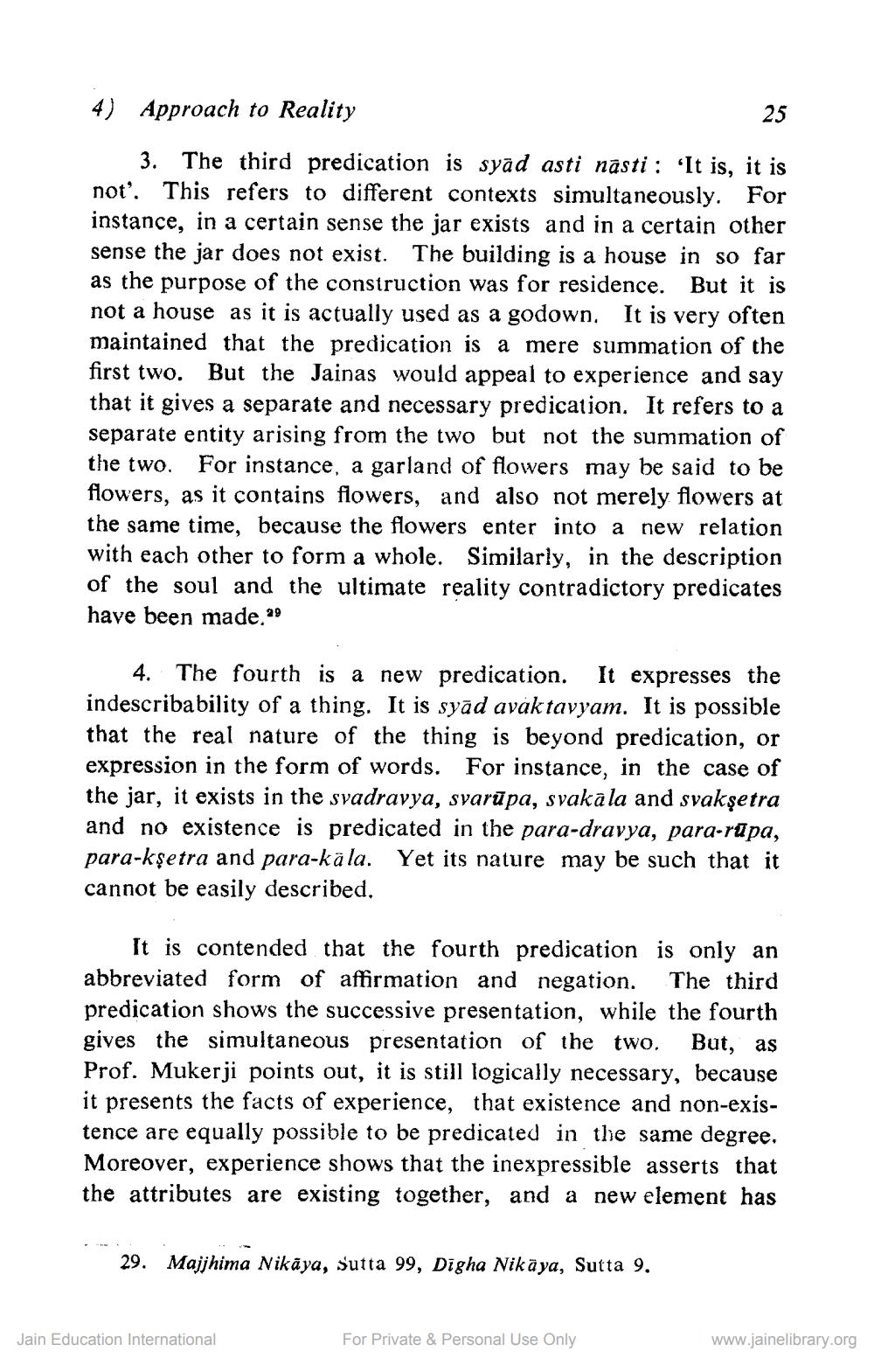________________
4) Approach to Reality
25
3. The third predication is syad asti nasti: 'It is, it is not'. This refers to different contexts simultaneously. For instance, in a certain sense the jar exists and in a certain other sense the jar does not exist. The building is a house in so far as the purpose of the construction was for residence. But it is not a house as it is actually used as a godown. It is very often maintained that the predication is a mere summation of the first two. But the Jainas would appeal to experience and say that it gives a separate and necessary predication. It refers to a separate entity arising from the two but not the summation of the two. For instance, a garland of flowers may be said to be flowers, as it contains flowers, and also not merely flowers at the same time, because the flowers enter into a new relation with each other to form a whole. Similarly, in the description of the soul and the ultimate reality contradictory predicates have been made."9
4. The fourth is a new predication. It expresses the indescribability of a thing. It is syad avak tavyam. It is possible that the real nature of the thing is beyond predication, or expression in the form of words. For instance, in the case of the jar, it exists in the svadravya, svarupa, svakala and svakşetra and no existence is predicated in the para-dravya, para-rupa, para-kşetra and para-kala. Yet its nature may be such that it cannot be easily described.
It is contended that the fourth predication is only an abbreviated form of affirmation and negation. The third predication shows the successive presentation, while the fourth gives the simultaneous presentation of the two. But, as Prof. Mukerji points out, it is still logically necessary, because it presents the facts of experience, that existence and non-existence are equally possible to be predicated in the same degree. Moreover, experience shows that the inexpressible asserts that the attributes are existing together, and a new element has
29. Majjhima Nikaya, Sutta 99, Digha Nikaya, Sutta 9.
Jain Education International
For Private & Personal Use Only
www.jainelibrary.org




